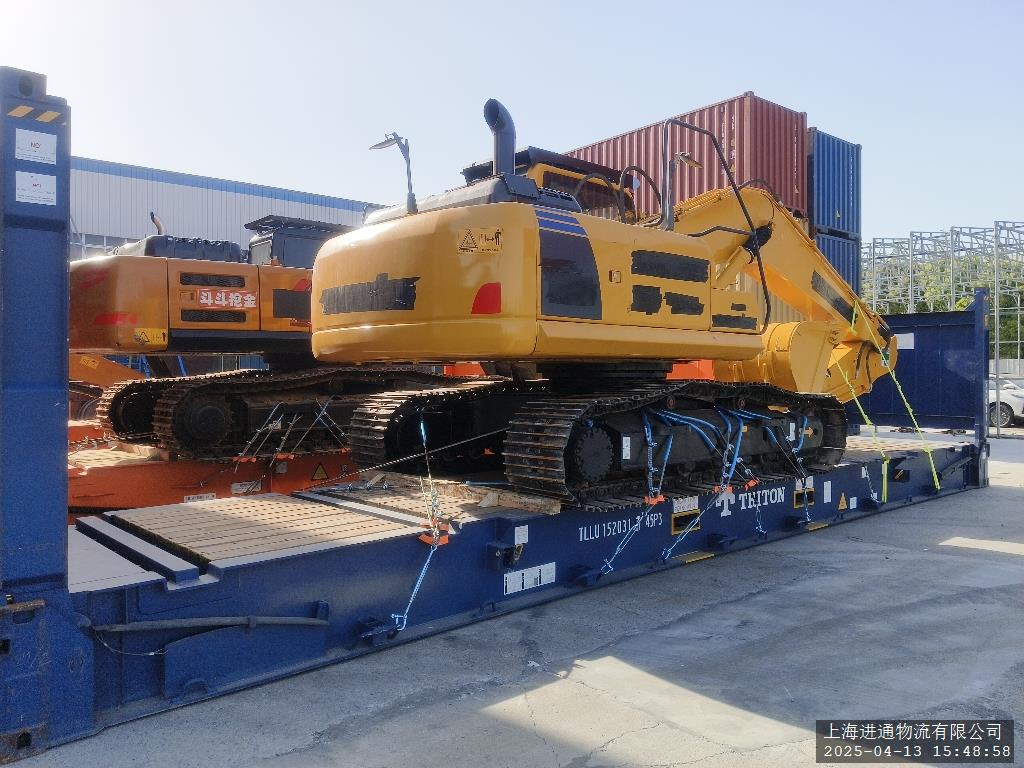Comment choisir entre la pelle CAT 320 et la pelle rétrocaveuse CAT 420
Release time: 2025-04-15
In construction, civil engineering, and infrastructure projects, choosing the right excavation equipment is crucial to ensuring the smooth progression of the project. The CAT 320 tracked excavator and the CAT 420 backhoe excavator each have their unique advantages and suitable applications. While both are types of excavators, they differ significantly in design and use. Here are several important factors to consider when selecting the most suitable equipment for your needs:
1. Type of Work and Usage
CAT 320: This machine is primarily used for heavy-duty earthworks, suitable for large-scale excavation, demolition, trenching, and similar tasks, especially in complex terrain or when a greater excavation depth is needed. It is typically used in construction, mining, and infrastructure projects.
Suitable tasks: Large-scale excavation, earthmoving, transporting large materials, deep excavation, etc.
CAT 420: The CAT 420 backhoe excavator is a versatile machine that combines the functions of an excavator and a loader. It is suitable for smaller projects and can perform efficient digging, loading, grading, and hauling tasks. Its flexibility makes it ideal for various medium to small-scale earthworks.
Suitable tasks: Urban construction, pipeline installation, landscaping, road construction, small construction projects, etc.
2. Work Range and Excavation Depth
CAT 320: As a tracked excavator, the CAT 320 has a longer boom that allows for greater excavation depth (typically up to 6 meters or more) and is suitable for large-scale operations.
CAT 420: As a backhoe excavator, it has a smaller work range and depth, typically suitable for digging depths not exceeding 4 meters. Its bucket and digging arm are shorter, making it more flexible, but it does not have the depth capacity of the tracked excavator.
3. Size and Maneuverability
CAT 320: Being a medium-sized tracked excavator, the CAT 320 has a relatively large size. While it has strong digging capabilities, its maneuverability is lower, especially when working in narrow sites, where it may not be as agile as the backhoe excavator.
CAT 420: Designed as a backhoe, the CAT 420 is smaller and more maneuverable, making it suitable for precise operations in confined spaces. It is especially advantageous for work in urban environments and narrow construction sites.
4. Work Efficiency
CAT 320: It is ideal for large-scale, high-intensity tasks and can complete a large volume of earthmoving work in a short period. Its powerful engine and digging depth make it highly efficient for heavy-duty excavations, especially for long-term, large-area projects.
CAT 420: Although its work efficiency may not match the CAT 320 excavator, its versatility and flexibility make it highly efficient in medium to small-scale projects, especially when frequent changes in work modes are needed. Its efficiency advantage becomes more evident in such tasks.
5. Maintenance and Operation
CAT 320: While the CAT 320 requires more complex maintenance, such as regular checks on the hydraulic system, engine, and track wear, CAT series machines are generally known for their durability, and their widespread service network ensures ease of repairs.
CAT 420: Due to its more compact design, the maintenance of the CAT 420 is relatively easier. Especially in urban construction and small projects, operators may need to adjust functions quickly, making its multifunctionality and ease of operation a significant advantage.
6. Fuel Efficiency and Environmental Considerations
CAT 320: As a high-powered machine, the CAT 320 consumes more fuel and is suitable for long, continuous operation in large projects. However, this leads to higher operating costs.
CAT 420: With a relatively smaller engine and higher maneuverability, the CAT 420 consumes less fuel. For short-term, small-scale tasks, its fuel efficiency makes it more cost-effective.
In summary, choosing the right excavator depends on the specific needs of your project. The CAT 320 is ideal for large, heavy-duty projects, while the CAT 420 excels in flexibility and multifunctionality, making it suitable for medium to small-scale projects. By considering the work environment, task types, and budget, you can ensure the maximum performance and return on investment for your equipment, thereby enhancing the overall efficiency of your project.



